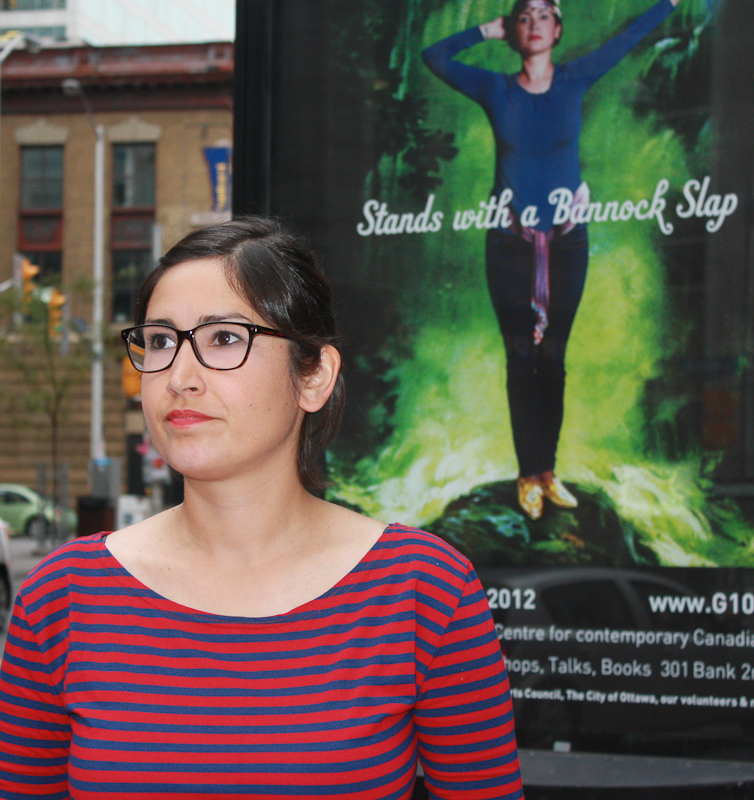
Gallery 101 hosted its first fall double opening, Real Job Interviews paraphernalia- re-enacting fiction and oskinikiskwēwak (Young Women) on Sept. 7.
Real Job Interviews explores Montreal-based artist Julie Lequin’s narrative process. Within the gallery space rests five of Lequin’s hand-crafted characters, on mannequin stands, which she intends on using in later videos.
Also featured is Saskatchewan-born Joi Arcand’s exhibition oskinikiskwēwak (Young Women), which displays mock advertisements along Bank Street. Playing with aboriginal stereotypes, she uses sarcastic phrases like “these feathers are digital” to poke fun at the absurdity of old advertisements.
“I really wanted to make a splash in fall and so celebrating both at the same time was a really good way to do it,” new director and curator, Laura Margita said.
“The fact that they were both women artists, and both doing work about identity pulled it together for me,” she said.
Lequin said the current exhibition is based on personal experiences.
“This new project that I am working on is based on job interviews, inspired by my own job interviews, job interviews I went to, to have a job, and job interviews I gave to other people,” she said.
Lequin described a video in her exhibit in which she plays two roles. One as the interviewee, and one as the interviewer. The interviewer is characterized by a strict principal of a Quebec General Vocational College, also known by the acronym “CEGEP.”
The exhibition emphasizes this pre-video process with look-books that show the characters de-constructed into random yet corresponding images. “Eeyore” from A. A. Milne’s Winnie the Pooh appears as a symbol of depression and character trait of the principal.
Margita said the two exhibitions have are related by process.
“Both of them are process-based and both of them are identity-based. They’re both creating alternative histories or stories built out of their histories,” Margita said.
Arcand’s work is explicitly identity-specific as it explores her identity as a Cree and German-Canadian.
She re-created posters based on 1920 calendar pin-up girls. “They depict really stereotypical native women in scantily-clad outfits and just really project that fantasy world of the Indian princess as a vulnerable character to be sexualized,” Arcand said.
Margita said the initial use of these images was an old advertisement scheme in the 1920s.
“Those pin-up girls were in calendars that were marketed in the United States to bring hunters to the Canadian wilderness,” she said.
Margita said that they were “pin-up girls” and “sirens,” used to lure “great white hunters from the south.”
Arcand had family and friends pose as the original figures in a contemporary fashion to “take back the image.”
“In the original posters, the models that were used were white women so I’m in turn putting back a real native woman into the background that was created in the original illustration,” Arcand explained.
“Native women are still alive and strong. We’re human beings that deserve respect and we can laugh, can have fun, and poke fun at these images at the same time,” Arcand said.
Margita, referencing both artists, said “both of them share a strength that all artists would like to do — to be able to talk about their realities in a way that is engaging and beautiful and meaningful.”





